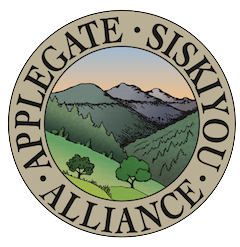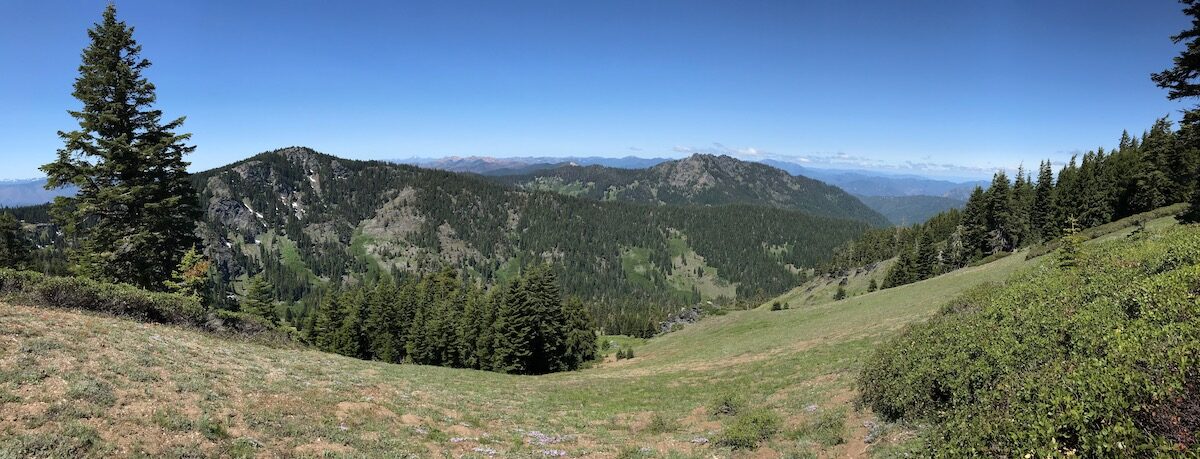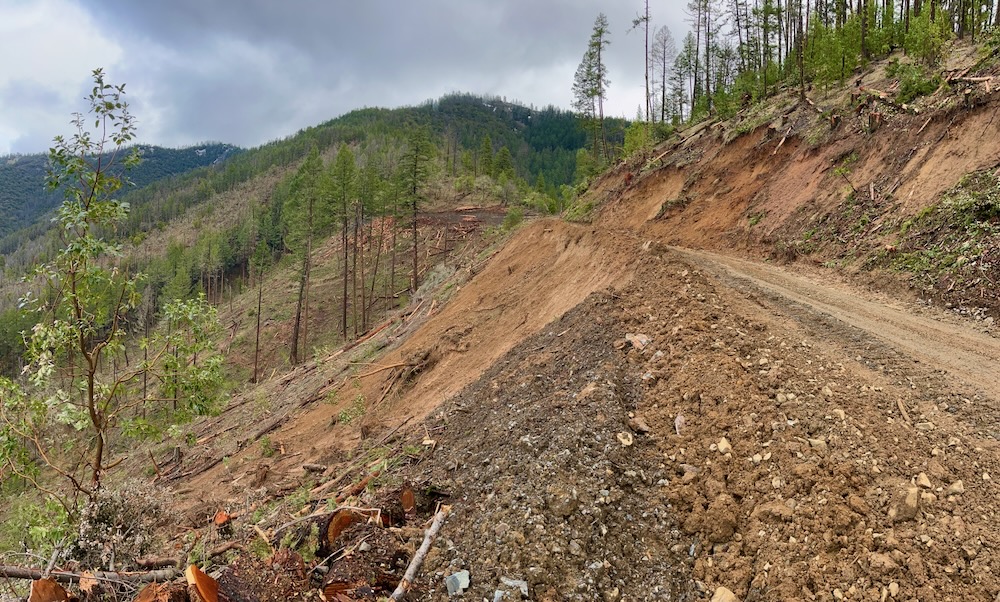
For the past few months, through heavy rain and deep snow, the Medford District BLM has been logging the Boaz Salvage Timber Sale in the Upper Applegate Valley above Eastside Road, and for the past few months Applegate Siskiyou Alliance has been documenting extreme environmental impacts.
We have repeatedly notified the Medford District BLM that violations of both the Categorical Exclusion and Decision Record that authorized this project are occurring and significant environmental impacts that exceed those considered in the limited environmental analysis are taking place. Since December 2024, we have repeatedly asked the BLM to implement their own Project Design Features (PDFs) surrounding wet weather logging, yarding, hauling and road construction on this timber sale. These PDFs are intended specifically to avoid damage to streams, soils, water quality and Riparian Reserves, by limiting certain yarding, hauling and ground disturbing activities during the wet weather season.

Unfortunately, the BLM has simply refused to implement these PDFs, even after repeated requests to stop the wet weather activities and comply with NEPA authorizations. Instead, the BLM moved forward with these activities through multiple severe atmospheric rivers and heavy precipitation events between December 2024 and March 2025.
The BLM’s irresponsible behavior and clearcut logging prescriptions culminated recently into a large landslide and debris flow that occurred on March 16, 2025 in unit 27-5 of the Boaz Salvage Timber Sale. The landslide and debris flow is clearly associated with the wet weather and clearcut logging activities implemented in the Boaz Salvage Timber Sale by the Mineral Creek Logging company.
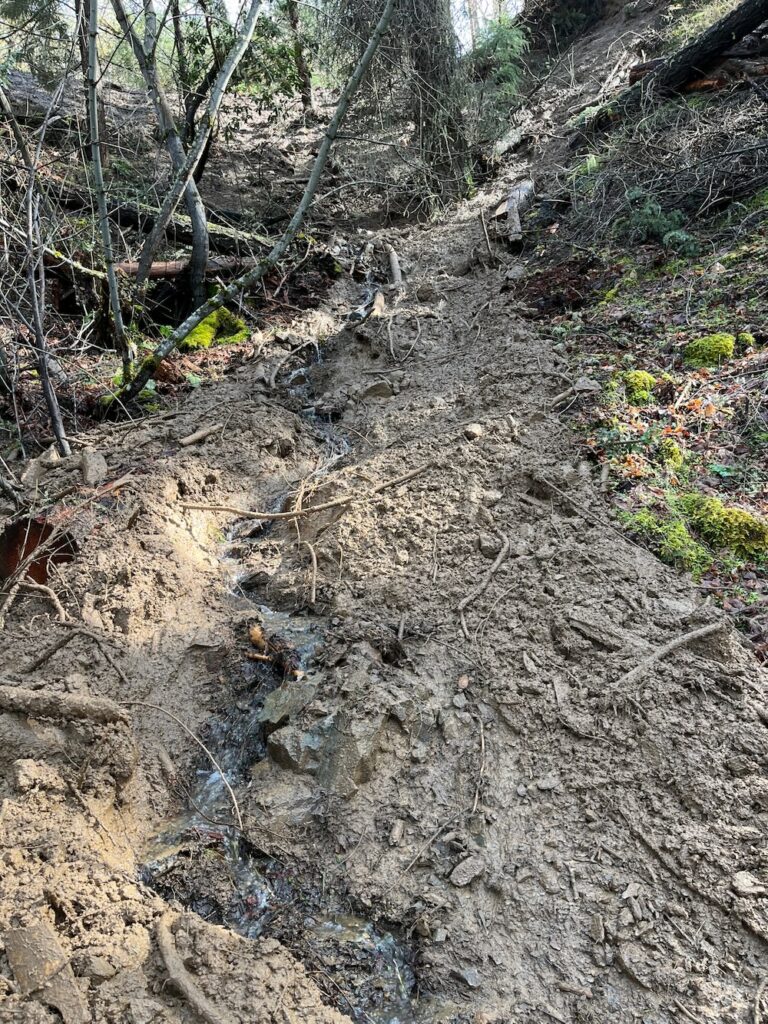
Logged in January and February 2025, unit 27-5 of the Boaz Salvage Timber Sale was predominantly mature Douglas fir forest before being logged and the forest had sustained little mortality in recent flatheaded fir borer mortality events. Yet, BLM retained only 5.3 trees per acre in unit 27-5 with most of the retention occurring in a draw in the eastern half of the unit, while most of the western portion was a large clearcut with only a few isolated trees and snags remaining.
Logging off whole groves of mature, living conifer forest on exceptionally steep, potentially erosive slopes, the adjacent hardwood trees, woody shrubs, and understory vegetation were also removed through collateral impacts, the soil was heavily disturbed and skyline yarding scars cut deep grooves into the steep mountainous terrain. These yarding scars create unnatural erosion gullies that alter the slopes hydrology, accumulate runoff and can channelize debris flows like they did in unit 27-5. .
The landslide cut loose both above and below road 39-3-27.2 tearing down the steep clearcut slope and facilitating a debris flow of thick mud and logging debris which ran down the slope, jumped onto the road, and spilled down a seasonal tributary of Neds Gulch. Likely thousands of cubic feet of mud and logging debris either flowed down the slope or was deposited directly into the stream filling the riparian corridor.
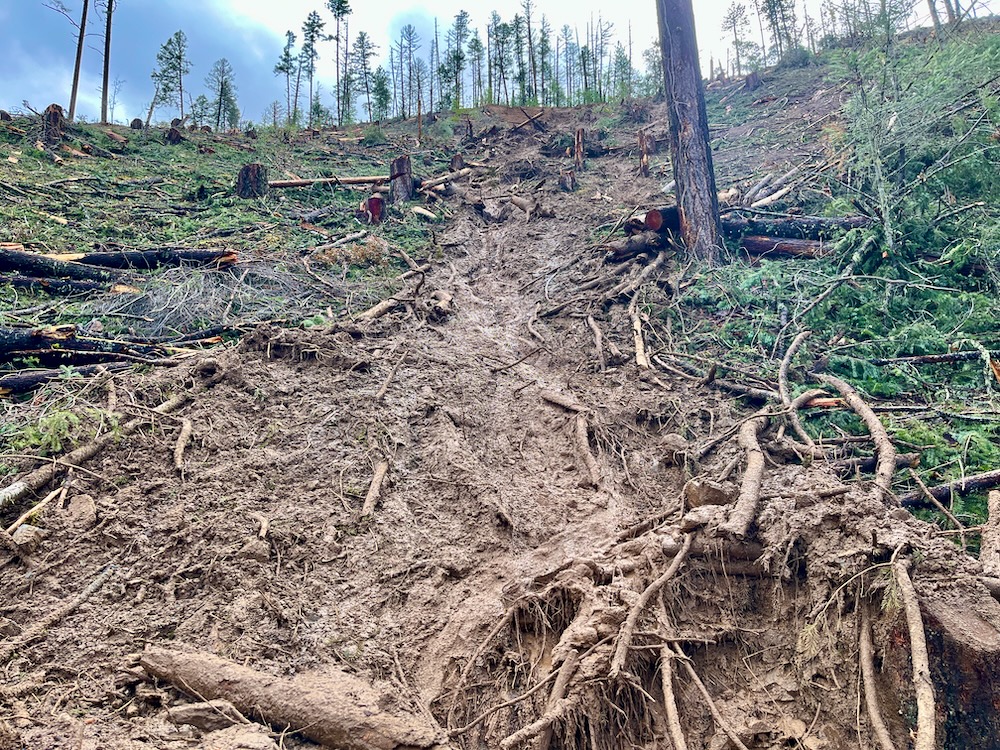
The BLM blames the landslide on a steep, poorly built road cut that failed and triggered the proceeding blow out. Yet, this assumption fails to consider the vast stump field through which the land slid, the wasteland of disturbed soil, yarding scars, logging slash and unmerchantable waste wood left over from log processing. The impacts of logging, yarding, log hauling, and log processing and the destabilization they created were at least strong contributing factors to this devastating landslide and debris flow, if not the sole factor. These slopes have withstood rainstorms, rain on snow events, atmospheric rivers and floods for thousands of years, and just happened to blow out, mere months after clearcut logging occurred? We find this to be far more than a coincidence, and instead a cause and effect relationship.
Please contact the Medford District BLM and ask them to withdraw the Boaz Salvage Timber Sale due to significant environmental effects that exceed those authorized and due to repeated violations of wet weather logging restrictions and Project Design Features identified in the Boaz Salvage Timber Sale Prospectus and the 2016 Resource Management Plan. Below are contacts for BLM officials:
Elizabeth Burghard, Medford District BLM District Manager: eburghar@blm.gov
Lauren Brown, Medford District BLM, Ashland Resource Area Manager: lpbrown@blm.gov
Please also contact your elected officials and encourage them to support conservation organizations and local residents by requesting that the Boaz Salvage Timber Sale and all recently approved “salvage” timber sales in the Applegate Valley be withdrawn including the Forest Creek Salvage Timber Sale, the SOS Project, and SOS Project 1.
Below are links to contact forms:
https://www.wyden.senate.gov/contact/email-ron
https://www.merkley.senate.gov/connect/contact/
These projects are using recent beetle mortality in the area to instead target living, green trees with clearcut logging practices that have no place on federal lands. The significant impacts sustained in the Boaz Salvage Timber Sale demonstrate that the BLM’s “solution” of clearcutting living, green forests under a guise of “salvage” logging is creating much more dramatic and last impacts than the beetle mortality that occurred in 2022 and 2023. The real threat to these watersheds is BLM “salvage” logging, not habitat producing beetle mortality patches that are already regenerating, with a diversity of native species.
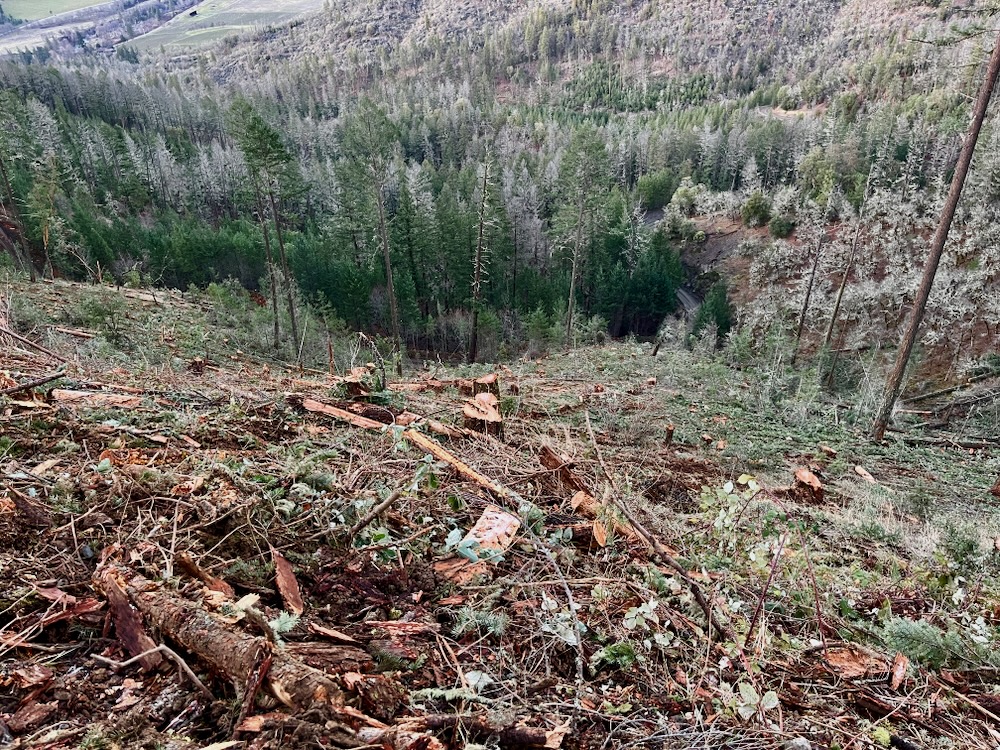
Unit 27-5 and the location of the future landslide directly after clearcut logging operations on January 13, 2025. For reference notice the snag and few retention trees at the bottom of the slope and at the center of the photo.
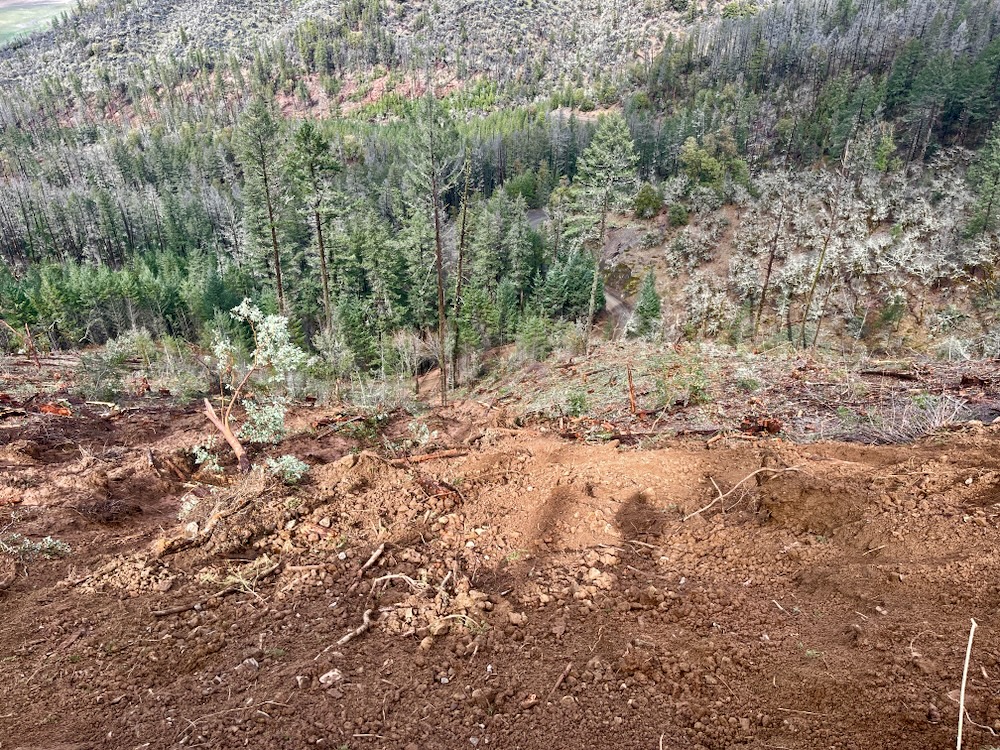
The same location after the landslide on March 17, 2025. For reference notice the snag and few retention trees at the bottom of the slope and at the center of the photo.
